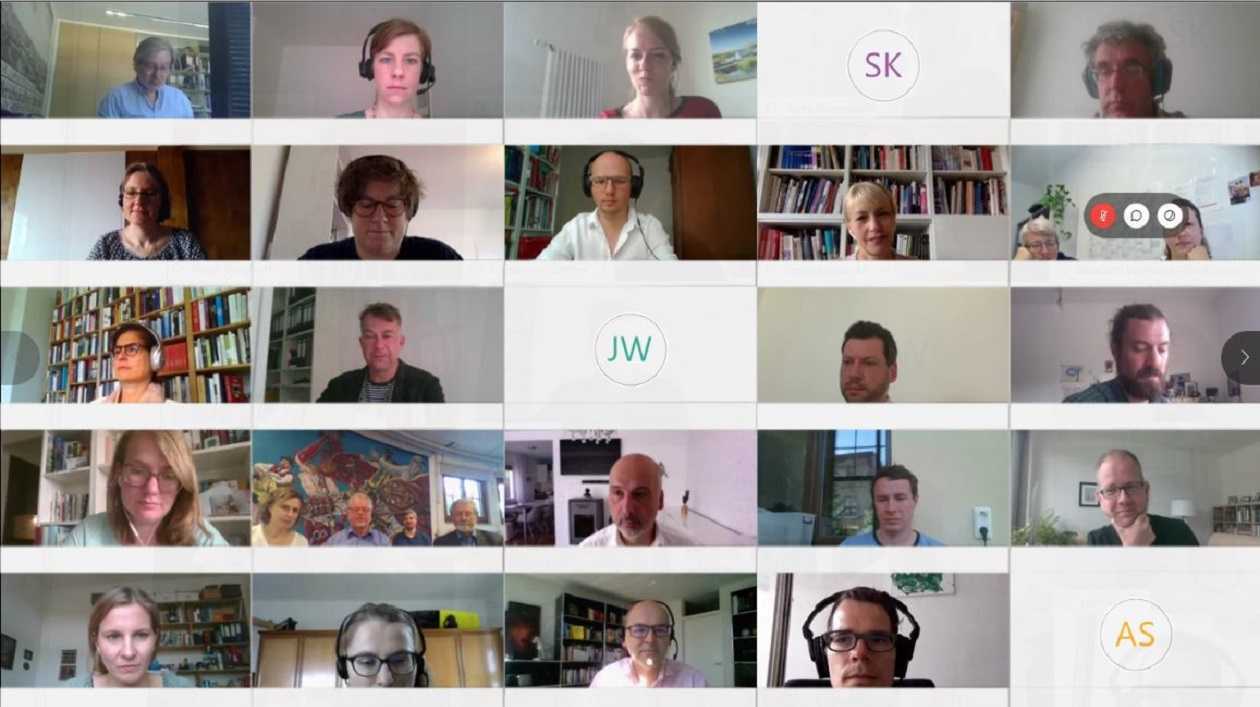Digital network meeting with museum professionals from fifteen institutions
News from 07/01/2020
The burning questions of 2020 virtually under discussion: pandemic experience, communication formats, and digitization strategies

In the course of the project, the regular group meetings of museum4punkt0 have proven to be an important format for exchanging thoughts in person among the partner institutions: experience has been gathered, synergies created, ideas developed, and collaboration strengthened. This year, the face-to-face meeting took place in the digital sphere – which is, itself, one of the burning questions at the moment: which digital formats are suitable for conferences, project meetings, team meetings, workshops, and workshop discussions? Here, too, people need to think digitally – digital event formats ought to offer more than a one-to-one transmission of the analog event. Correspondingly, digital thinking lies at the core of the many individual projects in which the network partners are developing and testing interdisciplinary digital content and services for museums.
In this phase of the project, the foremost question is that of how best to communicate the findings from work processes, the experiences, and the results – both internally within the individual institutions and externally. With regard to the latter, the project is tasked with providing extensive access to its results and expertise, and ensuring that they can be used as effectively as possible by other institutions in the German museum sector. Source codes and files are made available to this end and, in addition, the developmental context of digital applications, the operating concepts, visitor research, and other articles on the subject of digital communication are published throughout the year. A central point of access to the online publications will offered on the network website.
Just how productive the exchange of ideas and information within the network has been is evident not only from the high expectations that the associated institutions have of further collaboration, but also from the reports on dealing with the significant expansion of hygiene standards. The increased need for cleaning and disinfection, for example, means that many virtual reality features inside museums cannot be offered to visitors at all for the time being, or can only be used with inconvenience or subject to restrictions. A reluctance on the part of the visitors to use hands-on media has been observed and the concerns of personnel dealing with the public have been reported. The demand for content accessed online, or on the premises via visitors’ own devices (BYOD), has increased significantly; this will become another focus for digital communication in many institutions.
In this context, too, it is becoming clear that experiences resulting from the pandemic over the last few months have had an impact on the digitization strategies of museums. Beyond the need to cope with a significant drop in visitor numbers and to meet the challenges posed by hygiene requirements, the question arises of how allowance can be made for ad hoc offers in the existing digitization strategy. As a complement to the novel experience of visiting an exhibition without a crowd of visitors, it is reported that members of the public who first became interested in a museum’s online presence during the corona-related closure then came along in person when it reopened.

